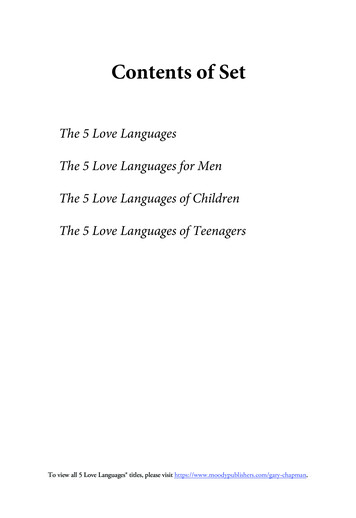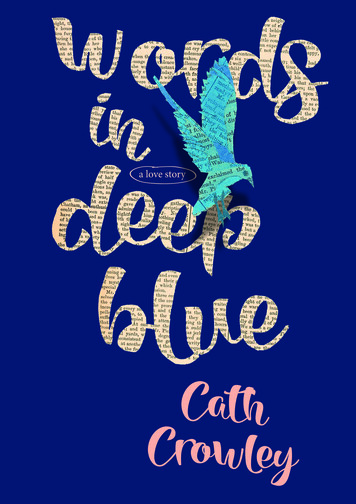
Transcription
a love storyCathCrowley
Cath CrowleyContentsIntroductionAustralian Curriculum AreasPre-reading ActivitiesReading ActivitiesThemesImagery and SymbolismPlot & StructureCharactersStyle and Use of LanguageSettingWriting IdeasQuotes/Ideas for Discussion After Reading the NovelFurther Ideas Using TechnologyAuthor NoteFurther Reading
Words in Deep BlueIntroduction‘Since her brother Cal drowned, Rachel has failed Year 12, lost all her friends and watched hermother become consumed by grief. Desperate to get away, she moves back to Melbourne,which she left three years ago. Back to Henry, her once best friend/unrequited love. Back toHowling Books, the used bookstore Henry’s family owns. Back to people who have no ideaCal is gone. Meanwhile, Henry’s girlfriend just broke up with him, his mother wants to sell thebookstore and the best friend he hasn’t heard from in three years just arrived back in town,acting like a different person. Set largely against the delightful and evocative background of aused bookstore, Words in Deep Blue is a beautiful examination of grief, love and the power ofwords. Told in a dual narrative and littered with excerpts from letters and notes left in books atthe shop, Cath Crowley has created a sweeping story about self-discovery and growing up, filledwith complicated and flawed characters.’ - Meg Wheelan, Bookseller and PublisherWords in Deep Blue is an incredibly moving and engaging novel about teenagers reading – sothere is a wonderful opportunity to use this book in a unit designed to encourage students toengage with literature.The novel references a range of poems and novelists, and so works beautifully as a lead into the study of short stories, novels, poems and letters. Students could read and study thestories, novels and poetry mentioned in the novel, or they could create their own reading lists,completing book reviews and sharing them with the class.The Letter Library, the heart of the novel, presents a wealth of activities. Students could createa physical Letter Library in the classroom, or a virtual Letter Library online. In addition, studentscould complete a letter-writing unit while studying the novel.Words in Deep Blue explores rich themes – the impact of grief on the individual, the impactof landscape in shaping and healing us, and the importance of words in connecting people.The characters are likable but flawed, and provide a great opportunity for analysis and classdiscussion.There is so much in Words in Deep Blue to use in the classroom. The subject matter allows aclass to celebrate literature and letter writing, whilst providing an opportunity for students topresent their ideas and findings through technology-based activities.
Australian Curriculum AreasThe following codes (which are indicative only broadly of the relationship between the points oractivities below and the relevant Curriculum area), have been created to link to the AustralianCurriculum as follows:AUSTRALIAN CURRICULUM AREA/STRAND/MODE/GENERAL CAPABILTIES/ CROSSCURRICULUM PRIORITIES e.g. ACELT1812/Language/Writing/Intercultural Understanding(LA/W/IU)STRANDS: LA – Language; LT – Literature; LY1- LiteracyMODES: R- Reading; W – Writing; S1 – Speaking; L – Listening;GENERAL CAPABILTIESLiteracy (LY)Intercultural Understanding (IU)Personal and Social Capability (PSC)Information and Communication Technology (ICT) CapabilityCritical and Creative Thinking (CCT)Ethical Understanding (EU)CROSS-CURRICULUM PRIORITIESAboriginal and Torres Strait Islander histories and cultures (ATSIC)Asia and Australia’s Engagement with Asia (AAEA)Sustainability (S2)For more detail re curriculum areas, refer to the Australian Curriculum, Assessment andReporting Authority ish/curriculum/f-10?layout 1
Pre-reading ActivitiesWhat do you believe?In the novel Rachel questions her beliefs and as a result forces Henry to question his beliefs too.As a class, discuss the questions below. (ACELT1635/LT/RWSL/LY,IU,PSC) Do you believe in ghosts? Do you believe in time travel? Do you believe that humans have control over their fates? Do you believe the future is set? Are you generally an optimist or a pessimist? Or can’t you be categorised? Do you believe in soul mates?The Lost Art of Letter WritingWords in Deep Blue explores how letters are a powerful way of connecting with people.(ACELT1772/LT/R.W/LY,CCT) Discuss what a handwritten letter offers the sender and the receiver. Discuss why the art of writing letters is beginning to die. Discuss a world whereeverything is submitted electronically. What can handwriting reveal about a person? Do letters feel more personal? Why or why not? What’s your view of Facebook? Is it the place for deeply personal news? How does aFacebook post differ from a letter? What are the pros and cons of social media? Choose some letters for students to read and discuss. (Teacher Resource: Letters of Notewebsite and books.) Pair each member of the class with a pen pal. Give time in classes for students to writehandwritten letters. Students could choose what to write but if some need help, topicsare listed below as an aid. (ACELT1773/LY1/WSL/LY,CCT) Ten things you know about me, and ten things you don’t. Ten films I love Ten films I hate The best and the worst of my week These things I fear These things I love Quotes I love Books I love Questions I’d like answered Question I don’t ever want answered Class Letter LibrarySet up a Letter Library in the class, full of secondhand books that students have chosen. Havestudents mark the lines that they love, and leave letters in books for other people to find.(ACELT1773/LT/WSL/LY,CCT)If you’d rather not write in books, have students form pairs to create a virtual letter library. SeeFurther Ideas Using Technology.Have students write a book review of one novel in the class Letter Library. Reviews could thenbe left in the books.
Reading ActivitiesRachel wishes herself back to when her brother was alive. Imagine you can wish yourself backto a moment in time. Describe the moment and why you’ve gone back. (ACELT1635/LT/RWSL/LY,CCT,PCS,IU)Why does Henry consider himself a ‘dead man’ on page 13? (ACELY1744/LY1/RWSL/LY,CCT)‘These must be the most depressing words in the in the history of love. I tried really hard to loveyou.’ (p.12) Make a list of five other depressing words/phrases in the history of love. You coulddraw from popular culture, film, TV, novels or make up your own (for example, ‘it’s not you; it’sme’). (ACELT1773/LT/WSL/LY,CCT)What would you do if it were the last night of the world? Plan your itinerary from beginning toend. (ACELT1773/LT/WSL/LY,CCT)Has your world ever felt too small? Write about a time when you wanted more than you had.Or, write about a time when you took a risk. Describe the risk, why you took it, and how the riskturned out. (ACELT1635/LT/RWSL/LY,CCT,PCS,IU)Describe Henry’s sister George in three words. (ACELY1744/LY1/RWSL/LY,CCT)What’s the Letter Library? Is it wrong to write in books? Why or why not? (ACELY1744/LY1/RWSL/LY,CCT)Write a letter where you tell a stranger ten things about yourself. Decide which book (it can befiction or non-fiction) you’d put it in, and explain to the stranger why you’ve chosen the book asyour letter’s home. (ACELT1773/LT/WSL/LY,CCT)Why does Rachel leave the ocean? (ACELY1744/LY1/RWSL/LY,CCT)Choose three words to describe Lola. (ACELY1744/LY1/RWSL/LY,CCT)Look up the growing block universe theory of time and write a definition of it. Find a diagramand draw this into your reading journal. Does it make sense? Why or why not?What decision does Henry make on page 75. Do you agree with him? Why or why not?(ACELY1744/LY1/RWSL/LY,CCT)Name one precious thing you’d never sell, regardless of how much money someoneoffered you.Make a prediction: will they save the bookshop? (ACELY1744/LY1/RWSL/LY,CCT)What’s your opinion of Amy? Support your opinion with a quote or example from the text.(ACELY1744/LY1/RWSL/LY,CCT)
Write a paragraph about one of your favourite fictional characters. Where are they from? Whatare their flaws? What are their good qualities? Why do you like them? Now, swap with a partnerand edit their work, to improve clarity, spelling, sentence and paragraph structure. (ACELY1747/LY1/RW/LY,CCT)What’s the importance of the wren on page 137? What about Rachel might it signify?(ACELT1772/LT/RW/LY,CCT)Make a prediction about how George’s story will end. (ACELY1744/LY1/RWSL/LY,CCT)Rachel, like a lot of people, claims that she hates all poetry. Find a poem that you love. Youdon’t have to explain what it’s about, just underline the words or phrases that resonate withyou. Include the poem in your journal and in the class Letter Library. (Remember, song lyrics arepoems, too.) (ACELT1773/LT/WSL/LY,CCT)Rachel and Henry both change a little after page 167. How do they change? (ACELY1744/LY1/RWSL/LY,CCT)‘Do we have a set amount of seconds to live when we’re born or an unknowablenumber?’(p.173) Which do you believe? (ACELT1635/LT/RWSL/LY,IU,PSC)Do stories have the power to change people? Are words useless in the big scheme of things? Ordoes Rachel have her schemes the wrong way around? Or, is it not that simple? (ACELT1635/LT/RWSL/LY,IU,PSC)What does Rachel find on page 180? How does it make her feel? (ACELY1744/LY1/RWSL/LY,CCT)Why does Rachel’s opinion of the Letter Library change? (ACELY1744/LY1/RWSL/LY,CCT)What are some things that Rachel worries about when she sees her mum? (p.201)‘She doesn’t seem shy. She seems hostile and aggressive.’ (p.214) What’s your opinion ofGeorge? Give reasons for your answer.‘If you and Rachel were naked and Henry and I were making jokes, it’d be a whole differentstory.’ (p.220) Discuss this double standard, and the reasons behind it.Why does Henry suggest that sometimes we need the poets? (p.244) (ACELY1744/LY1/RWSL/LY,CCT)Why does George’s letter feel heavy to Henry? (p.273) (ACELY1744/LY1/RWSL/LY,CCT)In what way does the bookshop symbolise Cal? In what way does it symbolise life? (ACELT1772/LT/RW/LY,CCT)
ThemesThe main themes of the novel and supporting quotes are outlined below as a teacher reference.(ACELT1635/LT/RWSL/LY,IU,PSC) As a class, list what you think are the themes of the novel. In pairs or small groups, choose one theme. Write two discussion points for your theme, and use them to guide a class discussion. Provide the class with quotes from the text to illustrate your theme.Memories‘George and I have found all kinds of things in books over the years – letters, shopping lists, bustickets, dreams.’ (p.34)‘I’m thinking about the transmigration of memory. Not the transmigration that happened in theBorges story, but the transmigration of memory that happens all the time – saving people theonly way we can – holding the dead here with their stories, with their marks on the page, withtheir histories.’ (p.304)Discussion Point: How does the novel show the importance of personal landscapes?Discussion Point: Is there such a thing as truth? Or do we all invent our own?Discussion Point: How are our memories influenced by our landscapes?Change and growth‘He and Mum bought this place twenty years ago, when it was a florist.’ (p.32)Activity: Map the ways in which the characters in Words in Deep Blue change.Discussion Point: The only truly satisfying lives are the ones where change occurs.Discussion Point: Change is a small death. Discuss in relation to the book.Discussion Point: Growth and change are not always positive.Isolation/Connection‘Why are you writing to me? According to everyone at school, I’m a freak.’ (p.41)‘Mostly people write to strangers who love the same books as them – and some stranger,somewhere, writes back.’ (p.37)Discussion Point: Literature gives us more than stories. It gives us connection.Love‘The Letter Library is a section of books that aren’t for sale. Customers can read the books, butthey can’t take them home. The idea is that they can circle loved words or sentences on thepages. They can write notes in the margins. They can leave letters for people who’ve read andbeen there before them.’ (p.22)
‘I love this place but I don’t know that I love it as much as Dad does – he doesn’t care if it makesmoney.’ (p.32)‘I wanted so badly to study the water it had come from.’ (p.6)‘I knew everything there was to know about Henry. Like just didn’t cover it.’ (p.20)Discussion Point: Words in Deep Blue is about many types of love. Romantic love is the leastimportant of all of them.Literature‘Sometimes you need the poets’.’ (p.244)‘I love books down to the full stops.’ (p.311)Discussion Point: Words are the most powerful form of change.Discussion Point: Literature tells us who we are.Grief‘I open my eyes at midnight to the sound of the ocean and my brother’s breathing. It’s been tenmonths since Cal drowned, but the dreams still escape.’ (p.5)‘’You want to hide. You want to be miserable.’ (p.54)‘Flat and starless, as though the world had become a box with a lid on it.’ (p.55)‘Not surprisingly, I haven’t taken the break-up well, and I have no intention of taking it well in thefuture.’ (p.27)‘What’s that wonderful Dickens line from Great Expectations?’ Dad asks. ‘The broken heart. Youthink you will die, but you just keep living, day after day after terrible day.’ (p.31)Discussion Point: Words in Deep Blue explores the idea that grief is not only felt at the death ofa person. We can feel grief over the loss of other things too, such as our hopes and dreams.Discussion Point: Discuss the representations of grief in the novel.Time‘I don’t believe in ghosts or past lives or time travel or any of the strange things that Cal liked toread about. But every time I stand on the beach I wish us all back‘. (p.7)Discussion Point: Words in Deep Blue shows us that life is about the past, present, andthe future.
Imagery and SymbolismWhat does the ocean symbolise in the novel? Explain your answer and give a quote from thetext to support your argument.Why might the author have chosen to set the story in a bookshop that was once a florist? Canyou find any other settings in the novel that have been ‘reused’?What is symbolic about the transmigration of the Letter Library?How is the structure of the novel symbolic of the themes? Consider the letters between Cal andGeorge, and the letters in the Letter Library.
Plot and Structure(ACELT1641/LA/R, W, S1, L/LY, CCT)Dual NarratorsAs a class, discuss the following: Why might the author have chosen to alternate between Henry and Rachel’sperspectives? How would only having Rachel as narrator changed the mood of the novel? Why might the author have chosen to add in George and Cal’s story through letters andnot through first-person narration?LayoutHow does the book’s layout and design support and extend the narrative?Romantic ComedyThe novel is a coming of age story about serious issues, but it is also romantic comedy. Thepace is fast, the dialogue is witty, there’s wonderful chemistry between the characters. The useof humour and romance enhances the themes of the novel.A romantic comedy generally follows the structure set out below.The Set Up. The chemistry between the two people is established, the interior and exteriorconflict is shown.The Meet Cute. The incident that brings the couple together and into conflict.The complications, also known as fun and games. The couple is drawn together but are atcross-purposes. One character is changing the other – perhaps they are changing each other.The Midpoint. A situation that binds the couple – but presents further complications.Dark Night of the Soul. Everything seems lost.Ending resolution. The characters reconcile. The characters have changed in order to betogether. Usually, one main character changes to a greater extent.In pairs, discuss the questions below. Take notes, and share your views with the class. In what ways does the novel follow the romantic comedy structure? In a novel, or a short story, the structure is often reliant on a question that is set up andanswered by the author. The question for Rachel in Words in Deep Blue could be - Willshe be able to free herself enough from the grief over Cal’s death to reengage with life?What other questions does the writer set up through the plot of her novel?
CharactersComplete the table below by adding in key quotes from the text to illustrate each character’skey changing points. Choose quotes from different points in the novel to show progression.Present your quotes to the class. Discuss, as a group, the changes that occur in each character.(ACELT1640/LT/R, W, S1, L/LY, CCT, inning)Quote(Middle)(Quote)EndExplanation ofchange
Style and Use of LanguageVoiceThe narrative voice of Words in Deep Blue is first person, present tense, from both Rachel andHenry’s point of view, with letters and notations from George, Cal, Martin, Mr and Mrs Jonesand some strangers. Choose a section of the narrative and rewrite it in third person. How does this change thenarrative? Why has the writer chosen to write in the first person? How does the narrativevoice support the themes of the novel?Voice is created by a range of devices including syntax, punctuation, word-choice, literarydevices such as metaphor and simile, character development and dialogue. Henry and Rachel have very different voices. Choose one paragraph for each, andanalyse how the writer creates this difference.HumourHumour is an important tool to use when writing about grief. Do you agree? Why or why not?Setting(ACELY1746/LY1/WSL/LYICT/CCT)Words in Deep Blue has three important settings: the ocean, the bookshop and the booksthemselves. Find a quote from the text to to describe each of these settings. Authors often create mood boards, or scrapbooks, to illustrate/explore the settingbefore they write. Create a scrapbook for Words in Deep Blue, to show how Rachel seesthe ocean, how Henry sees the bookshop, and how you imagine these things. Create a mood board or a scrapbook for a story that you plan to write. After you’vefinished, describe your setting in a paragraph, exploring what you see, hear, taste, touchand smell.Writing Ideas(ACELY1746/LY1/WSL/LY,ICT,CCT)In Words in Deep Blue, Henry loves ‘The Love Song of J. Alfred Prufrock’ by T. S. Eliot. Find apoem that you love. Underline the words and phrases that appeal to you, noting the reasons you have chosenthese words or lines. Can you find examples of alliteration? Similes? Metaphors? Repetition? Explain the effectof these literary techniques What is the mood of the poem? Find a song that illustrates the mood of the poem. How is this mood created? What is the poem about? Provide a biography of the author.
Kate Tempest, a rapper, poet, playwright and author says, ‘I feel like there is a momentwhen language lives, and that is when it is read with the same kind of electricityand vigour as it’s written with.’ Perform your poem to the class, or record the poemand play it to the class.‘A book must be the axe for the frozen sea inside us.’ Kafka. Write about a song, or a book thathas changed you in some way.‘We’d read ‘The Last Night of the World’ and the idea caught on that we should all spend anight pretending it was our last and do the things we’d do if an apocalypse were heading ourway.’ (p.15) Write a short story describing how you would spend your last night in the world. Itcould be in the form of a traditional short story, letter or list.Henry and Rachel are best friends. Write about a friend who is important to you.Quotes/Ideas for Discussion After Reading the Novel(ACELT1635/LT/RWSL/LY,IU,PSC) (ACELY1646/LY1/RSL/LY,CCT)‘Every love story is a ghost story.’ The Pale King, by David Foster Wallace. How does this quoterelate to the themes of the novel?Physical books are on the way out. And we don’t need them. What do you think? Give reasonsfor your answer.Dreams are more important than money. Discuss.Our landscapes define us – before, during and after life. How does your landscape define you?Sometimes you need the poets. How is poetry essential to humanity? Or is it?‘A book must be the axe for the frozen sea inside us.’ Kafka. Explore this quote in relation to thecharacters in Words in Deep Blue, and explore it in relation to your own life.Further Ideas Using Technology(ACELY1748/LY1/W/LY,ICT,CCT)Create a book trailer about this novel. Show the themes through the images, mood and music.Create an online interactive Letter Library, full of books you’ve read and loved. Include keyquotes, letters that you would write to the author, or a letter you might write to a stranger whohas also loved this book.Record a podcast where you discuss this novel. Look at characters, themes, language use andwhat the novel reveals about our society.
Author NoteCath Crowley studied Professional Writing and Editing at RMIT and works as both a freelancewriter and creative writing teacher. Words in Deep Blue is her sixth novel, following the threeGracie Faltrain novels and the award-winning Chasing Charlie Duskin and Graffiti Moon. To findout more about Cath, please visit cathcrowley.com.au.Further ReadingFiction (shared themes in brackets)Bradbury, Ray Fahrenheit 451, Ballantine Books, 1953 (The importance of books)Gale, Emily The Other Side of Summer, Penguin Random House, 2016 grief)Wood, Fiona Wildlife, Pan Macmillan, 2015 (grief, love, poetry)Zusak, Markus The Book Thief, Pan Macmillan, 2005 (grief, the importance of words)Non-fictionLaita, Mark Sea, Abrams, 2011 (Ocean life, referenced in novel)Short StoriesBradbury, Ray ‘The Last Night of the World’, 2012 (referenced in the novel)PoetryEliot, T.S. ‘The Love Song of J. Alfred Prufrock’, Prufrock and Other Observations, Faber andFaber, 2010Neruda, Pablo The Captain’s Verses, New Directions, 1972Walcott, Derek ‘Dark August’, The Poetry of Derek Walcott 1948-2013, Macmillan, 2014
Now, she's back, working at the bookstore, grieving for her brother Cal. She's looking for the future in the books people love, and the words they leave behind. Sometimes you need the poets The new novel from the award-winning author of Graffiti Moon. h y Cath Crowley a love story Cover image & design: i2i Design FICTION Also available as .
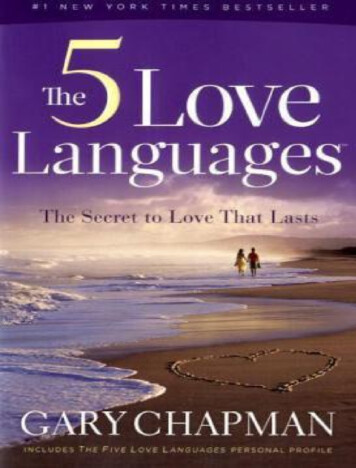
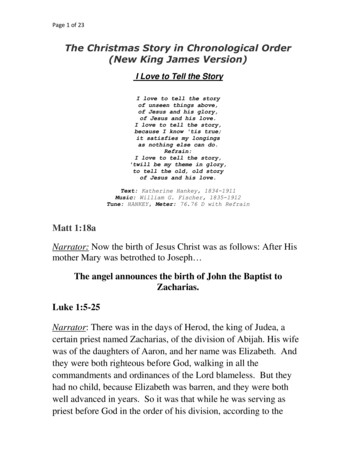
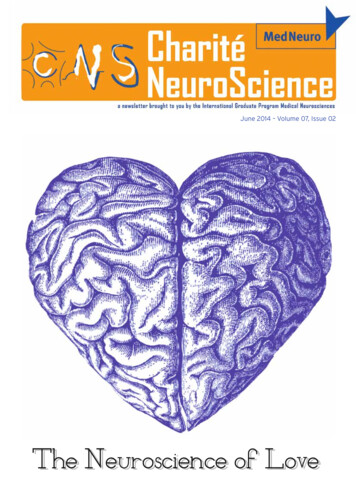
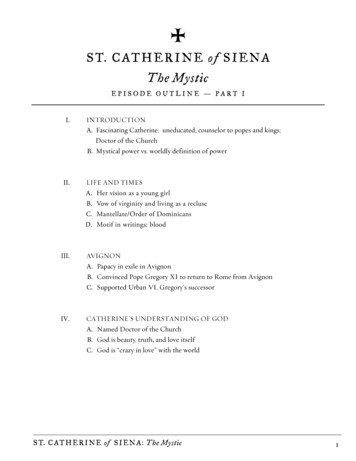

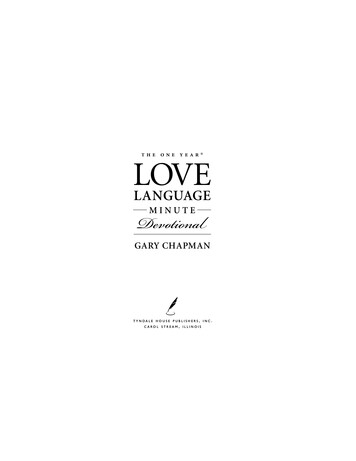

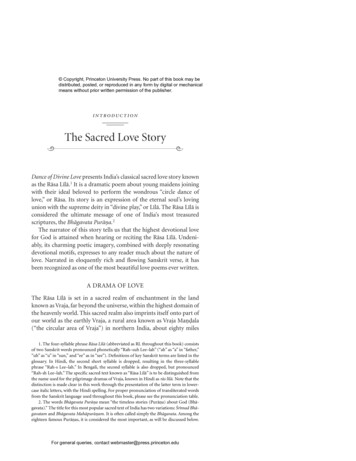
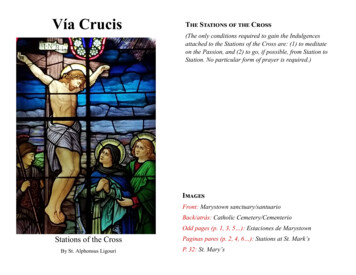
![Your Rights In Christ [Revised] - Yola](/img/31/07-20your-20rights-20in-20christ.jpg)
